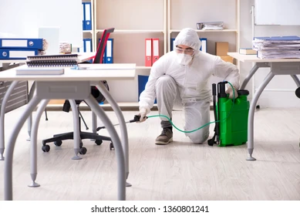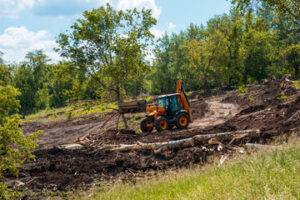Handyman Mesa, AZ, performs various tasks, from fixing a leaky faucet to crafting custom cabinetry for the kitchen. But their success is defined by the tools they use.
For example, a quality utility knife can save them time by making cutting and trimming tasks a breeze. A cordless drill helps them speed up assembling furniture and drilling holes.

Handymen have a unique combination of experience and knowledge that saves homeowners money. They know how to fix many different issues, like squeaky doors or broken light switches, saving the homeowner from having to hire a specialist for the job.
Moreover, they also have the necessary tools to get the job done. This means the work can be completed in less time and with less hassle compared to hiring a professional contractor.
While a handyman typically works alone, it is not uncommon for them to work with other tradespeople such as electricians or plumbers on bigger projects. This requires them to be able to communicate well and understand how their roles can be complemented by others.
A good handyman should also be able to identify additional problems that could arise during their job and make recommendations on how to tackle them. This can prevent future problems from occurring and save homeowners money in the long run. Integrating professional handyman estimating and invoicing software can help streamline the financial aspect of your business.
Power Tools
Power tools are mechanized devices that make tasks easier and faster for DIY enthusiasts, hobbyists, and professionals. Powered by electricity, compressed air, or batteries, they can be used for a wide range of projects. Power tools offer a number of benefits over manual hand tools, including increased efficiency and precision.
Electric power tools are the most common type of handheld power tool and come in corded or cordless varieties. Cordless models feature rechargeable batteries and are more flexible to work with, but may not have the same power as corded tools when the battery gets low. Some also suffer from “power fade” and can have limited run times.
Pneumatic power tools use compressed air generated by an air compressor and are less flexible than their electrical counterparts. They can be very powerful, but are also noisy and rely on regular maintenance for optimal operation. Most commonly, these power tools are designed for heavy-duty tasks in industrial settings. Many have adjustable power settings, allowing them to be adjusted for different jobs and materials.
Safety Equipment
Handymen often face many different hazards on the job, including physical, financial, and legal risks. By understanding these risks, handymen can take steps to mitigate them and protect their businesses.
Personal protective equipment is essential for handymen to minimize risk and ensure safety. These tools include work gloves to prevent cuts, abrasions, and chemical exposure; safety glasses or goggles to shield the eyes from flying debris, dust, and chemicals; and hearing protection such as earplugs or earmuffs to reduce noise exposure.
Keeping up with current PPE standards is also crucial to avoid accidents on the job. Handymen should be familiar with evolving OSHA regulations, which can impact everything from how to handle tools and materials to how to set up a safe workspace.
Other important handyman safety tips include inspecting walking surfaces before working, promptly addressing any spills or wet spots, and maintaining a clean workspace. These simple practices can greatly reduce the likelihood of accidental injury on the job.
Extension Cords
Extension cords make it easier to power tools and appliances without having to plug them into an outlet close by. However, they also pose safety risks if not used and stored properly. Cords that are plugged into outlets or electrical devices that exceed their amperage ratings can overheat, potentially causing fires or other damage to the cords and/or outlets and equipment.
Cords can be purchased in a variety of lengths, thicknesses and gauges (which indicates wire diameter) to suit specific projects and environments. Cords that are rated for outdoor use, for example, typically have thicker insulation and are made to resist weather exposure like rain, sun or snow.
Longer extension cords can be coiled in loops that resemble the way cowboys coil their lasso ropes. This prevents tangles and keeps the cords organized for easy use. Whenever using an extension cord, it is important to check the cable for signs of fraying or bare spots. Cords that are in poor condition should be discarded. It is also recommended that you select a cord with a higher amperage rating than the electrical device to account for voltage drop as the cord is extended.
Flashlights
Flashlights are incredibly useful tools for everyday activities, from illuminating dark spaces to finding lost keys. They’re also vital in emergency situations, providing visibility for first responders and enhancing safety protocols.
Modern flashlights use LED (light-emitting diode) technology to produce a bright, focused beam. The reflector that sits behind the LED determines the light pattern – from a narrow spotlight for long-distance illumination to a wide floodlight for close work. The lens that sits in front of the reflector further shapes and focuses the light, and can be clear or frosted to optimize performance.
Skilled technicians use soldering irons to create secure electrical connections on the PCB (printed circuit board). They then install the reflector and lens and seal them with adhesives or O-rings. A final quality check ensures the flashlight meets the manufacturer’s specifications for light pattern, brightness and working distance. It may also undergo drop, water resistance and other durability tests. The finished product is then packaged and shipped to retailers or directly to customers. In some cases, the flashlight can be customized with a laser-engraved logo.
Stud Finder
Whether you’re hanging picture frames or shelves, a stud finder is a tool worth having in your arsenal. It can help you avoid drilling into pipes and wires, which could lead to costly repairs down the line. While some models use magnets to detect studs, most electronic ones read the density of a wall’s surface. They’ll beep, flash, or use a combination of signals to alert you when it locates a stud. Some also have modes that identify metal pipes to prevent you from damaging water lines.
Most stud finders work best on drywall walls, but some have a metal-scanning feature that can be helpful for lath or plaster walls. In some cases, it’s also possible to find studs with manual methods. Regardless of which method you choose, be sure to scan away from light fixtures, outlets, and switches since they may interfere with the detector’s readings. This streamlined pick from Franklin Sensors is affordable, easy to operate, and didn’t require any calibration in our tests. It’s also small enough to fit in your pocket for quick use on the go.
Fish Tape
A fish tape is a long, flat wire stored on a reel used to “fish” electrical or data cables through a wall. It is rigid enough to be pushed through conduits and tight spaces but flexible enough to navigate bends. The best ones are nonconductive to minimize the possibility of arcing when used around live circuits.
Look for a wide, impact-resistant case that can accommodate a full strip of steel tape for easy winding. The best ones also have a rewind handle with an internal retaining strap to prevent the tape from kinking. Some have viewports to check the amount of tape left and an ergonomically designed handle that’s stronger, slip-resistant and large enough to grip with gloves.
Start by extending the tape only as far as needed to reach your destination. At the head of the tape, tie a softer wire (Romex, CAT5 or stranded copper) to reduce friction and make it easier to pull. If you have access to a wire-pulling lubricant, apply it to reduce friction in tight areas.
Electrical Tape
Electrical tape is an essential tool in any handyman’s kit, offering secure connections and insulation for wires. It is usually made from a PVC, PE or fibreglass cloth outer layer and has an adhesive on the inside that holds the tape together. It differs from other types of tape because it has an added layer of insulation, which helps prevent electricity from passing through it and causing electrocution.
Electrical tape also has a higher resistance to heat and moisture than regular tape, which makes it ideal for outdoor and indoor applications. It comes in various sizes, colours and ratings to meet the needs of different projects, such as:
Its primary use is to insulate electrical wires, helping to prevent electric shocks. It’s also often used for colour-coding purposes, where different colors signify certain functions or voltage levels, which can help save time and prevent errors when working with complex wiring systems. It can also be used for temporary repairs, providing a quick solution until a permanent repair can be completed.








